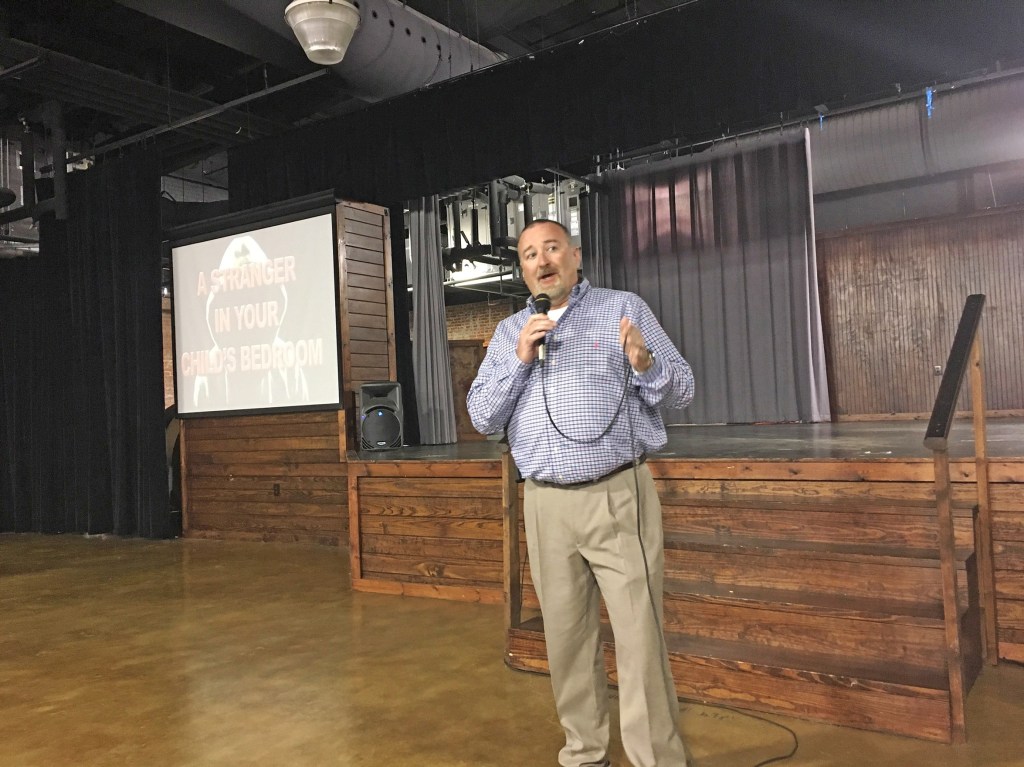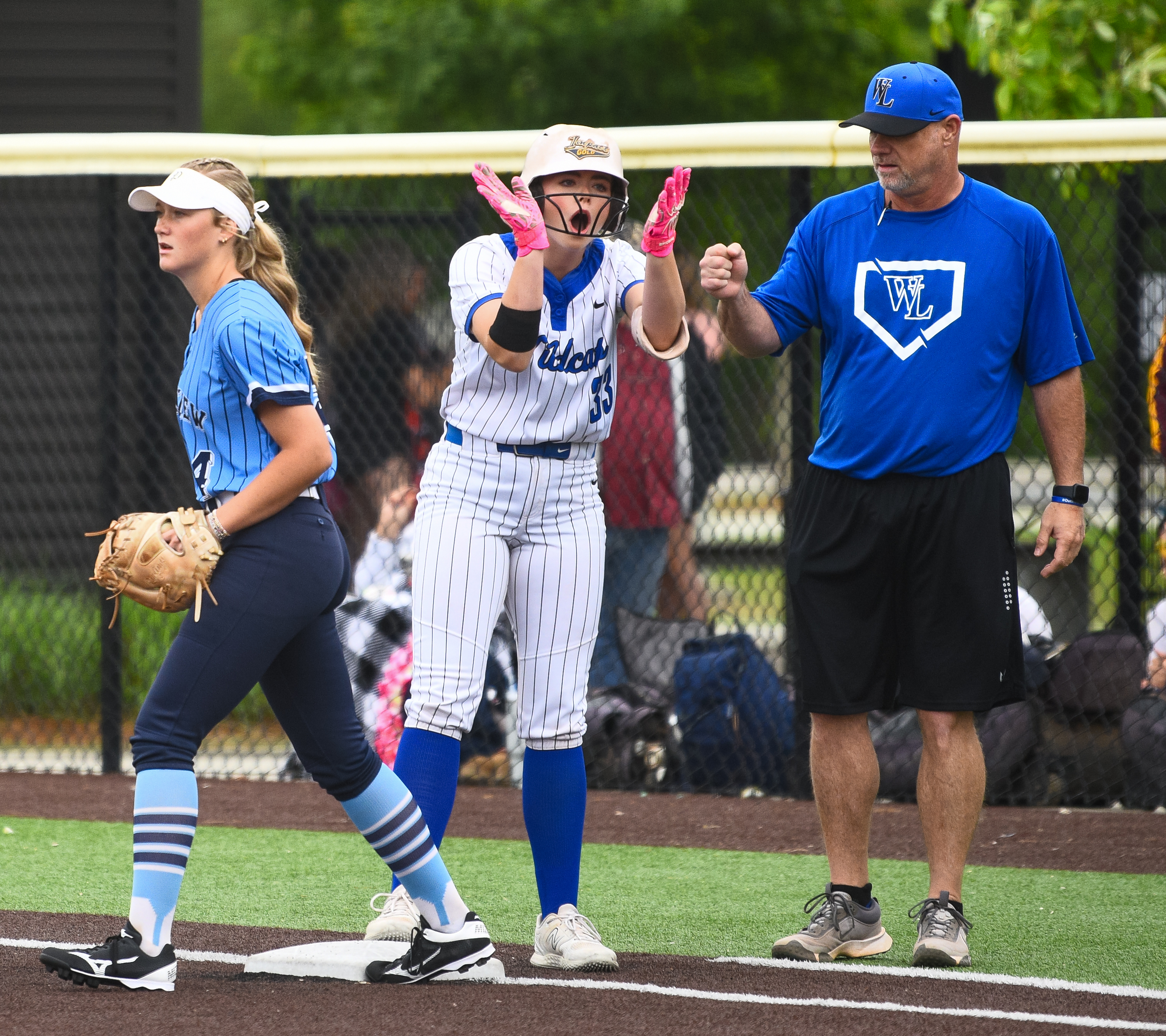PEACE MEETING: Official spills scary facts about smartphones
Published 6:30 am Thursday, April 11, 2019

- Rusty Bates, director of safety for Limestone County Schools, speaks Tuesday at the Parent Education And Community Event, or PEACE, event at the Limestone County Event Center.
If you’re the parent or guardian of a child who has a cellphone, you may already be aware there are online predators adept at preying on children or stealing their information.
Smartphones are also being used by minors for the purposes of sending inappropriate messages and photos or bullying. Most of the time, the incidents occur right under the noses of guardians who are clueless about the types of apps teens use to shield their behavior.
These are just some of the topics discussed Tuesday at a Parent Education And Community Event, or PEACE, held at the Limestone County Event Center. The guest speaker was Seth Sullivan, a Falkville police officer and education coordinator with The Alabama Association of School Resource Officers.
Sullivan revealed staggering statistics regarding smartphone use by preteens and teens, including that 98 percent of teens have at least one social media account, and that the average teen spends nine hours a day in front of a screen.
He said 73 percent of teens have a smartphone. He then asked how many parents allow their child to sleep with a smartphone in their room.
“You don’t allow a stranger in your child’s room,” he said. “That’s basically what you’re doing.”
Sullivan said a teen sends at least 250 text messages a day and checks his or her social media account at least 85 times per day.
He said not only are nefarious activities often taking place, but it can also be a factor in teen suicide. He urged those in attendance to learn more about Amanda Todd, a 15-year-old who exposed her breasts via webcam. The photos were posted to social media, which led to Todd being a victim of cyber bullying at her school.
Todd changed schools, and made new friends. However, when students at the new school discovered the old social media posts about Todd, the bullying started again. She took her own life in 2012, but gained notoriety after posting a nine-minute video to YouTube, in which she told her story through a series of flashcards. The video has been viewed more than 13 million times.
Sullivan said sexting, or the act of sending inappropriate photos or messages via text or app, is more common than most parents think. He said 54 percent of teens surveyed reported they engaged in sexting as minors. Only 2 percent of teens have told a parent or teacher about a sext they received.
Most teens who engage in sexting and online bullying have a wide array of smartphone apps to conceal their activities, including Kik, WhatsApp, Ask.fm, Poof, Burn, Bumble, Wishbone, House Party, Yellow, Monkey, Yubo, After School, Omegle and Tumbler. There are also more established apps like Facebook, Snapchat and Instagram. Another app, Snap Map, allows Snapchat users to see where their friends are anywhere in the world.
There are also a number of apps designed to hide photos or files, though they look like a calculator, compass or flashlight. The apps usually require a password to access the information.
“Look for extra apps on your kids’ phones,” Sullivan said. “Snapchat even has a hidden door behind it you can put pictures in.”
He said the five most dangerous places for kids to be online are grandma’s house, the school bus, bathrooms, bedrooms and at sleepovers.
“Why grandma’s house?” he asked. “Because she doesn’t have a clue.”
Other efforts
Elsewhere Tuesday, Rusty Bates, director of safety for Limestone County Schools, touted the systems efforts to keep students safe, including the installation of Safe Defend boxes, utilization of the Rave panic button and a deputy at every county school.
The Safe Defend boxes include a baton, restraints and other items a teacher may need in case of an active shooter situation. When a box is opened, it issues an emergency call to authorities.
The Rave panic button works in conjunction with the Athens-Limestone E911 center. It is a smartphone app that allows school officials to alert first responders to a school emergency with the press of a button.
Fred Sloss, chief deputy of the Limestone County Sheriff’s Office, said when the SRO program began in 1999, there were just two deputies who split time between six different schools. After the Sandy Hook Elementary School shooting in 2012, Sheriff Mike Blakely worked with Superintendent Tom Sisk to put a deputy at every school. Limestone County Schools was the first system in Alabama to do so, Sloss said.
“(SROs) work closely with administrators and want to be a part of the community,” he said. “They investigate crimes at the school, but we want students to come to SROs and talk to them. When I was an SRO, kids would come to me and tell me things they wouldn’t talk to principals or counselors about.”
Sloss said SROs are all highly trained and are certified by a number of groups, including Alabama Peace Officers Standards and Training Commission, National Association of School Resource Officers and The Alabama Association of School Resource Officers.
“They have to practice regularly because what they’re protecting is the most sacred thing to us; our kids and students,” he said.





